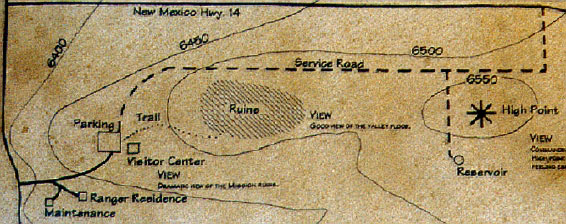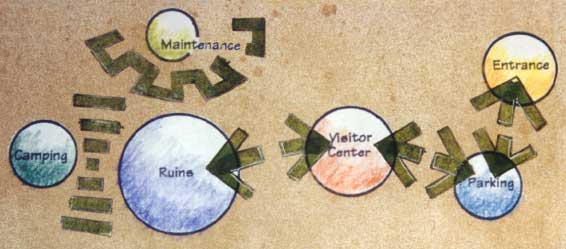
A mix of pit houses, pueblos and Spanish missions exist on the site. All have suffered greatly due to weather, archeological raiding and neglect. Archeological stabilization and protection is haphazard and unsightly. Changes to trail system needed to protect site.
Visitor Center
Current Center is a converted residence.
The internal layout is poor.
Topography
The site is dominated by a steep hill rising off the floor of a semi-arid valley. The major archeological features are located on top of this hill.
Flora/Fauna
Rattlesnakes present in high numbers. Imperative to keep visitors from wandering park grounds. Main vegetative cover is juniper and cholla cactus. No endangered species noted.
Parking
Cars, R/V's and buses share the same lot.
Semi-arid region. Great deal of daily and seasonal variation. Little rainfall but lightning and wind storms. Can be dangerous due to exposure.
Trails
Crushed limestone trail system. At times very steep.
No method to keep visitors from accessing more sensitive areas of the ruins.
Views
Parking/Visitor Center:
Dramatic view of the Mission ruins.
Site High Point:
Commanding view of Pueblo/Mission ruins and valley. There can be an uncomfortable exposed feeling especially during hot, cold or storm conditions.
From the Ruins area:
Good view of the valley floor. There is an uncomfortable, exposed feeling especially during hot, cold or storm conditions.
